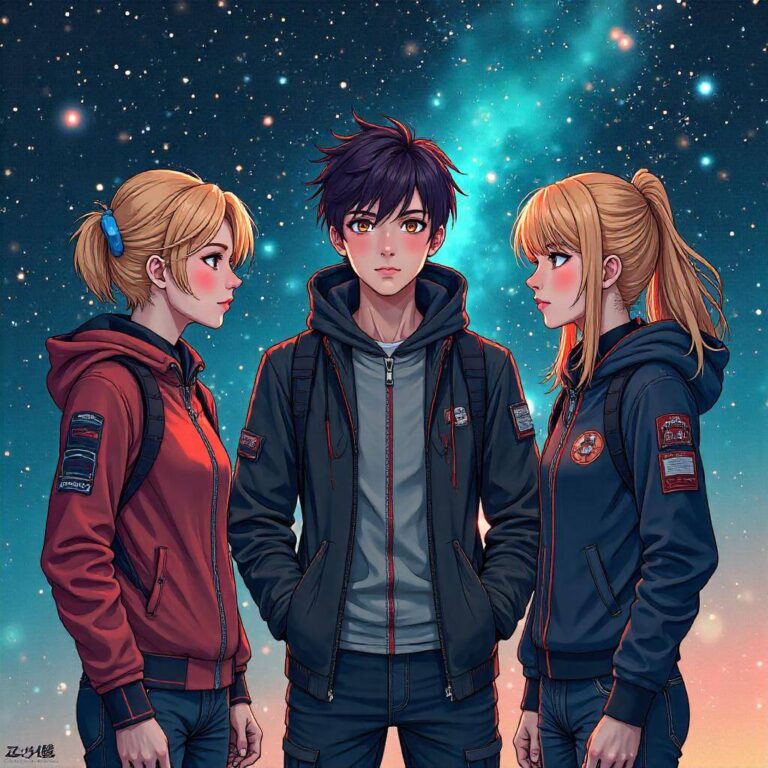Reader’s Question:
I’m curious about the concept of Newtypes in the original Mobile Suit Gundam. Since it was created after the idea of the Force, I’m wondering if Newtypes are meant to represent: 1. A depiction of human evolution, similar to “2001: A Space Odyssey,” or 2. A result of changes
in brain cells due to living in space colonies. Which interpretation is more accurate? I know that the next series, Ideon, seems to be inspired by “Forbidden Planet” and “2001,” so I guess overthinking it might not be necessary.
The Fascinating Concept of Newtypes in Mobile Suit Gundam
Ah, Mobile Suit Gundam. A classic that has influenced not just the mecha genre but the entire landscape of anime and sci-fi storytelling. If you’re anything like me, you might have found yourself scratching your head over some of the deeper themes. One question that pops up quite often is about Newtypes. Are they a representation of human evolution, akin to the ideas in “2001: A Space Odyssey,” or are they a byproduct of the environmental changes that come with space living? I’ve dug into this topic, and I’m excited to share my thoughts.
Setting the Scene: What Are Newtypes?
For those who might not be totally in the know, Newtypes are essentially humans who have evolved to better adapt to the conditions of space. They possess heightened intuition, telepathic abilities, and a deeper understanding of one another, which makes them capable of piloting mobile suits effectively. The original Gundam series, “Mobile Suit Gundam” (1979), presents this concept as not just a plot device but as a philosophical exploration of humanity itself. When I first watched the series, I was immediately drawn to the idea of Newtypes. It felt like a bridge between the mundane and the extraordinary, right? I mean, who wouldn’t want to develop psychic abilities while navigating through the cosmos? The thought of being able to sense what others are thinking or feeling is undeniably intriguing, almost like the ultimate form of empathy.
Two Competing Interpretations
Now, let’s get into the heart of the matter. The question posed is whether Newtypes represent: 1. Human evolution, similar to the themes in “2001: A Space Odyssey,” 2. Or changes in brain cells due to living in space colonies. Initially, my brain was leaning towards the first option. After all, “2001: A Space Odyssey” dives deep into human evolution and the potential for a higher consciousness. But as I did more research and reflected on the thoughts of those who are more knowledgeable than me, like the user mentioned in the thread, I began to see the merit in the second interpretation.
Newtypes: A Space-Age Adaptation
The user I mentioned earlier pointed out that Yoshiyuki Tomino, the creator of Gundam, suggested that Newtype abilities stem from the incredible adaptability humans possess. Just as people on Earth can trek across mountains and endure a variety of environments, those who live in space are evolving to survive on a broader scale. This idea resonates with me. After all, nature has a way of molding us according to our circumstances. Imagine living in a space colony. The vastness of space, the isolation, and the constant pressure of living in a confined environment would undoubtedly push humans to adapt in unexpected ways. It’s almost poetic, really. The struggles of living in space could lead to a new type of consciousness, a deeper understanding of one another — not just as individuals but as a collective humanity.
Personal Reflections: Finding Empathy in Unlikely Places
To be honest, this concept of Newtypes has made me reflect on my own life experiences. I’m a California kid who spent a significant part of my life in Osaka, which is like a cultural blending pot. You have to adapt to different languages, social norms, and even culinary delights. Sometimes, I feel like I’ve needed a bit of Newtype-like intuition just to keep up with the cultural shifts! For instance, I remember the first time I tried to explain a joke to my Japanese friends. I thought it was hilarious, but the humor didn’t quite cross the cultural barrier. It made me realize how our backgrounds shape our understanding and perceptions. Maybe, just maybe, if I’d had that Newtype ability to sense their reactions better, I could have tailored my delivery. It’s funny how these little moments can lead to deeper understanding – kind of like how Newtypes perceive one another.
Why Overthinking Can Be a Good Thing
Now, I get it. Some might say I’m overthinking this whole Newtype thing. After all, Gundam is, at its core, a mecha anime. But I think diving deep into these themes is what makes anime so special. It’s not just about the giant robots (though, let’s be real, those are super cool) but about the human experience. It’s about our struggles, our triumphs, and our evolution as individuals and as a society. I even find parallels with the next series, “Ideon,” which touches on themes of existence and consciousness. It’s as if each series builds on the ideas of the previous ones, creating a rich tapestry of storytelling that challenges the viewer to think, feel, and rethink their understanding of humanity.
Final Thoughts: The Evolution of Understanding
So, to wrap it all up, I genuinely believe that Newtypes embody both ideas — they’re a product of evolution, but they also highlight the incredible adaptability of humans in extraordinary environments. It’s fascinating to think that the pressures of space could lead us to a deeper connection with each other, and perhaps that’s a message for our own times. As we face challenges in our increasingly complex world, maybe we’re all becoming a bit more like Newtypes, learning to empathize and connect in ways we didn’t think possible. What do you think? Are we evolving into a new type of human, or are we just adapting to the cosmic forces around us? I’d love to hear your thoughts!



